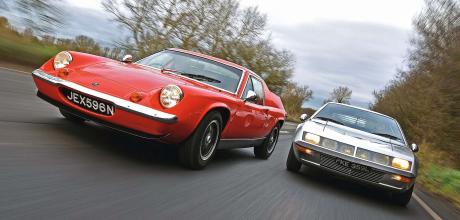1971 Alpine A310 vs. 1972 Lotus Europa Special
Developed on opposite sides of the English Channel, the Alpine A310 and Lotus Europa offered supercar technology in miniature.
Words Martin Buckley. Photography Will Williams.
EUROPA LEAGUE FINAL
You only get one chance to extract yourself from a Lotus Europa in a dignified manner. Getting in, funnily enough, is not too difficult so long as you remember to slide your bottom in first and swing the legs in afterwards – although even then it is almost impossible to avoid getting your right leg tangled up with the door. Getting out, at least for the stouter among us, is to be avoided during daylight hours, particularly if you have an audience (most of whom would like nothing better than to see yours truly crawling away from this 3ft 7¼ in-high mid-engined Lotus).
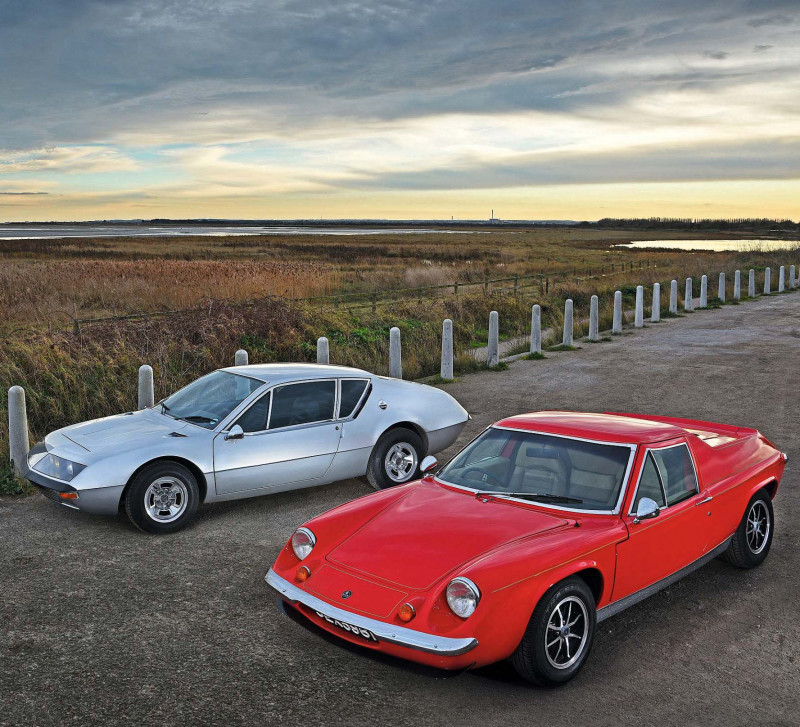
To be honest, I would defy anybody this side of Twiggy to exit a Europa with his or her dignity entirely intact. Linda Thorson drove an S2 Europa in The Avengers and even she didn’t make it look all that effortless, but then she was quite tall. In my case, the technique that appears to cause the least hilarity involves using the sill – and the roof – for leverage while peeling the Lotus away from my body, all the while bent forwards like a reverse limbo dancer. Only comparatively dignified, then, but it could be a lot worse.
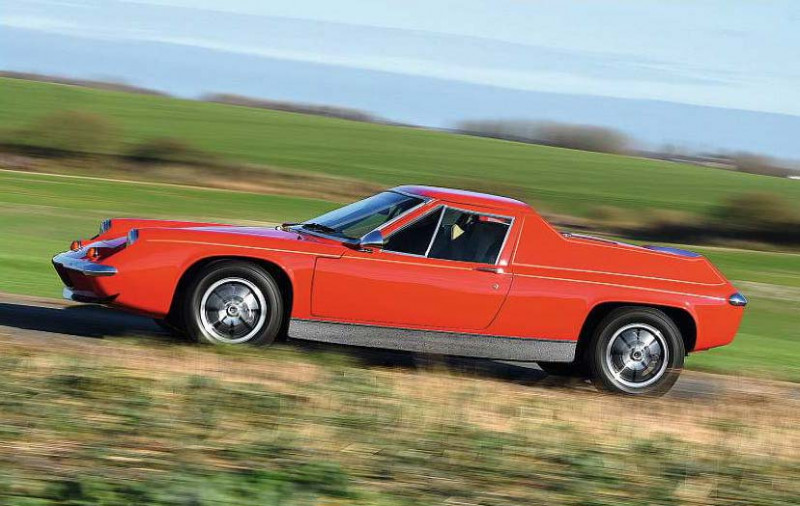
Few road cars are as uncompromising as the Europa, all in the name of pure driver appeal. But the agonies of ingress and exit are generally worth the effort – particularly when the Europa in question is a Special with 126bhp from its Big Valve Twin Cam and the five-speed transaxle from the Renault 16 TX and 12 Gordini. First seen in 1973, this was the car the Europa should have been from the beginning, even if it didn’t quite chime with Colin Chapman’s original 1966 vision of an affordable mid-engined sports car destined to take over where the Seven left off.
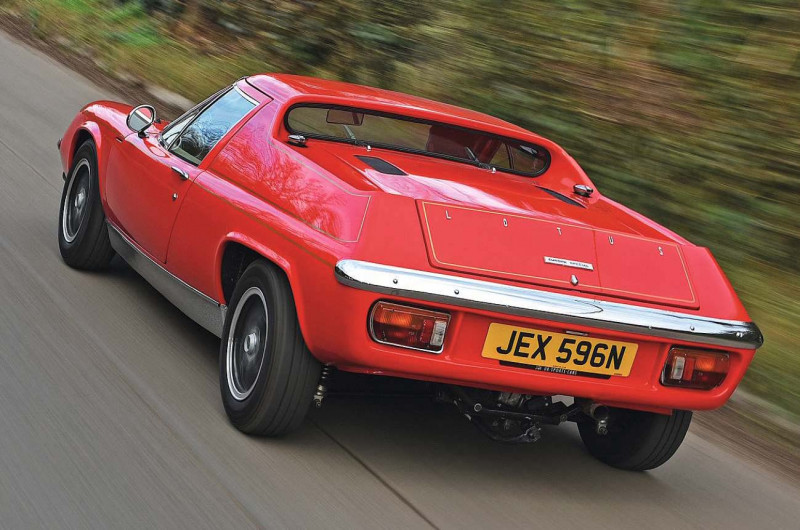
Conceived in 18 months and based around the lightweight Renault 16 powertrain, this was Chapman’s ‘car for Europe’ and his most radical road machine since the 1957 Elite. It featured a slew of time- and money-saving tweaks to keep the selling price down and get the volume up in his newly opened Norfolk factory.
‘The agonies of ingress and exit are generally worth the effort, particularly when the Europa in question is a 126bhp Special’
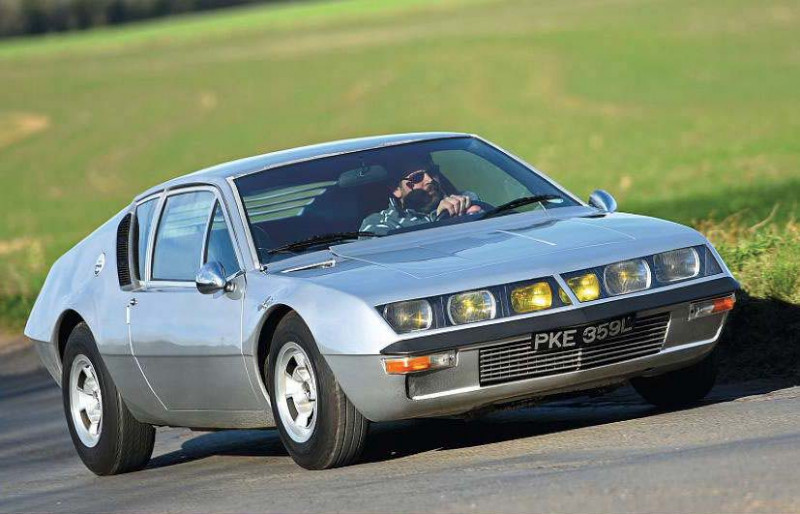
These included non-adjustable seats (you took a spanner to the pedals instead), fixed door windows and a no-nonsense aluminium dash, as well as extensive use of proven (Triumph-sourced) Elan parts for the front suspension and steering, plus the general concept of that car’s Y-shaped, 16-gauge steel backbone chassis. This was bonded to the body on early cars for added stiffness and used a new form of rear suspension comprising wide-based transverse links, radius arms and fixed-length driveshafts. Designed around off-the-shelf Ford bumpers (Anglia front, Cortina rear), John Frayling’s Kamm-tailed body had the lowest drag coefficient of any road car of the time, at 0.29.
‘The A310’s Gordini “four” starts instantly, with a boomy throb that is less seductive than the Twin Cam’s sluicing burble’
Combine that with a kerbweight 200lb lighter than an MG Midget and the 78bhp teased from the lightly modified, all-aluminium Renault engine looked quite respectable: good enough for 110mph-plus and 0-60mph in sub-10 secs. What on-paper figures don’t reveal is the incongruous nature of the saloon-car gear ratios inherited from the R16 – with a big gap between second and third – and a change that was as vague as the Elan’s was flick-switch snappy. Complaints about poor rear vision, doors that jammed against high kerbs and a tendency for the cabin to fill with fumes in traffic (pressurised plenum chambers and low-pressure areas on the body didn’t really work with the car at rest) added to the general sense that the Europa was something of an unfinished fifth-form school project, and a lot less practical than the equally agile – but faster – Elan. Only with the arrival of the S2 in the summer of 1969 did British buyers get their hands on right-hand-drive Europas (by then better soundproofed and featuring electric windows, adjustable seats and airflow ventilation), but it wasn’t until the introduction of the 108bhp Twin Cam in 1971 that the model showed true signs of maturity.
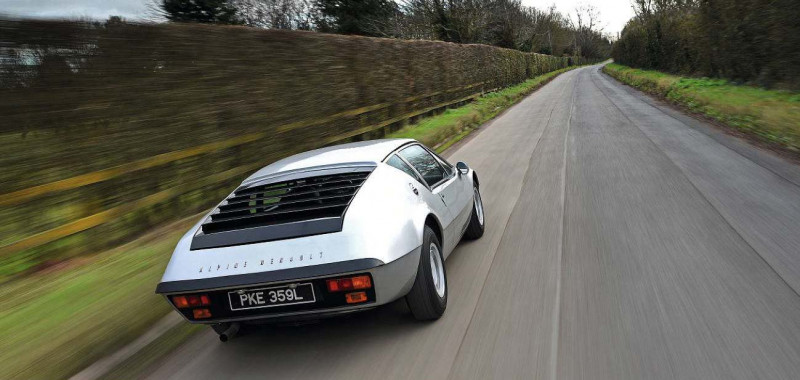
Chopping down the buttresses on either side of the rear deck made the Twin Cam instantly recognisable from without and much easier to see out of from within, where there was more space for big feet in longer, wider toe boxes. The 126bhp Big Valve engine was reserved for the last-of-the-line, five-speed Europa Specials of 1972-’75, readily distinguished by their pinstriping, silver metalflake-finish sills (very glam rock) and – usually – Dunlop alloy wheels.
The trademark black JPS-liveried cars were supposed to be limited to 100 examples, but proved so popular they stayed available until the end of production; you got the fag-packet gold pinstripes whatever the colour. This fully restored car, in Carnival Red, was allocated to long-time Lotus sales director Roger Putnam and lays claim to being the last Europa ever built. France’s rear-engined Alpines were almost as synonymous with rally success as Lotus was with Formula One by the early 1970s, the signature blue A110 coupés having won the International Championship for Manufacturers in 1971 and the new World Rally Championship in 1973, with Monte victories in both those years.
The Dieppe factory was seduced by the idea of moving upmarket with a more ‘grand touring’ style of car as an alternative to the aggressive, ultra-lightweight A110, but still followed the same format of a rear-engined, backbonechassis design, with Renault componentry and a glassfibre (or ‘stratified polyester’ as Alpine liked to call it) body that was moulded in one piece – and hugely labour-intensive to build.
Alpine had been founded by Jean Rédélé in 1955 and was still independent when the A310 was revealed at Geneva in 1971. But by the time production peaked in 1973, at 666 units, Renault was officially at the helm.
We tend to equate the long-running A310 series with the Peugeot-Renault-Volvo V6 engine, but the first 2340 cars between 1971 and ’76 had a Gordini-tuned Renault 16/17 type 807 in-line four-cylinder – all-alloy, crossflow and closely related to the original Europa unit – with its attendant five-speed gearbox.
Being one of the earlier VE-series cars, this 1973 example has the nearly full-width Triplex glass nose over an arresting sextet of rectangular iodine Cibié headlights that were specially developed for the A310. Two were the standard type, two main beams for road use and two were rally-style long-range units giving a spectacular view at night by 1970s standards. Michelotti was the author of the A110 but the new car, styled inside Renault, was a real leap forward into the new decade for the French, who had previously been starved of locally built sports cars.
While remaining unashamedly rear-engined, it employed an 89.5in wheelbase and was thus able to incorporate small rear seats of marginally more useful dimensions than those found in the Lamborghini Urraco or Maserati Merak. With wider (185x13) tyres at the back than the front, the A310 split its 1815lb 40:60 front to rear and swapped the A110’s swing-axle rear suspension for wishbones, with anti-roll bars at both ends.
Nothing like so technical to enter and exit, the longer Alpine is much roomier – and easier to see out of – than the waist-high Lotus, and has a more polished feel to its switchgear and fixtures. Leather lifts the mood inside compared to the swathes of grained oatmeal vinyl in the British car. On the other hand, the A310 is marginally less comfortable than the Europa once you are ensconced; the Lotus rewards your exertions by clamping you between its sill and centre console – race-car style – in a comfortably supine position, although after a day’s driving it doesn’t feel as if there is much between your backside and the floor.
Both cars have slightly off-centre driving positions – compromised by wheel-box intrusion – and tight pedal positions. Lift the front and rear covers and the Lotus claws back points by having two luggage compartments – one at each end – whereas the Alpine’s nose is full of spare wheel, deformable fuel tank and radiator, which means you have to choose between passengers and luggage on the rear seats.
Dwarfed by its Weber 45DCOE carbs, the A310’s boxy, undersquare engine can’t match the visual appeal of the Lotus. The Gordini ‘four’ starts instantly, its boomy throb also less seductive than the Twin Cam’s sluicing burble. Their outputs are fairly even but the Renault unit, with its 10.2:1 compression and the single, side-mounted camshaft’s aggressive timing, has to be revved hard against a much higher burden of weight. If it didn’t pull so well – and so smoothly – from 4-6000rpm, I’d have sworn that a couple of plug-leads had been swapped over.
Poor low-speed torque and a long bottom gear mean ponderous initial acceleration, yet the slippery A310 can top 120mph when fully wound out. It needs keeping on the boil: you find yourself regularly dropping to fourth even on the motorway to keep up the momentum. Every last available rev and gear ratio is there to be used to the full – which is not such a bad thing, because the change has a solidly accurate action that puts the Europa’s imprecise shift to shame.
It’s the same ’box but sits behind the engine rather than in front, entailing a convoluted rod linkage. Adjusting it was always a bit hit-and-miss (this one was due some attention), but you can at least spot the mechanism easily as it wiggles around slightly obscenely under the rear valance. Yet the Europa goes so well – in a straight line and around corners – that any shortcomings of the transmission are soon forgiven and forgotten. Its smooth, free-revving engine will spin one rear wheel for yards if you don’t feed the clutch in smoothly, and the acceleration from there onwards is almost savage: easily in the Ferrari Dino 246 class up to 70-80mph.
We are under instruction to keep the revs down, but this freshly rebuilt Twin Cam spins so freely – and sings so sweetly – that doing so requires a conscious effort. Conversely, it is as forgiving at low speeds as the Alpine is flat, always happy to be a gear ahead of where you expect it to be, with flexibility to spare. From inside, the Europa’s low build enhances the feeling of speed and before long everybody else on the road seems to be in your way. On tyres that look absurdly skinny by modern standards, the grip apparently has no limits and you just point the car instinctively where you want to be through delightfully light, direct steering. There’s no understeer, no roll, merely a sense that you are no longer in a world where slowing down for corners is required, even bumpy ones. The smooth ride is a bonus feature but you expect – and get – really good brakes.
In its handling the Alpine gets close to the standards the Europa sets, but is more focused on high-speed predictability than easy low-speed manners. Its steering, at two and half turns from lock to lock, feels heavy initially but lightens beautifully, returning all the right messages through the thick-rimmed wheel as it castors smoothly back through your palms. The narrow and inherently agile A310 has a GT-style ride and true sports car brakes, discs all round.
It turns in superbly and generates a lot of cornering power – much more than you would ever need on the road – and stays flat, neutral and undramatic, if not quite so light on its feet as the Europa. The power delivery characteristics of the engine make a little more sense now and, as in the Lotus, you don’t need to use the brakes often. Lift off at a critical moment – or build cornering speeds to a stage where understeer is about to transition into oversteer – and the laws of physics will doubtless come into play just at the point where most of us run out of talent.
For the most part the Alpine is a fascinating, forgiving and exciting machine. As French as a gendarme with a sense-of-humour bypass but much rarer (particularly in the UK, where A310s were never officially imported), it also looks very striking in six-headlight form on those gorgeous alloys. Its combination of Citroën SM-style ’70s chic with sports car credibility is not readily found elsewhere, and certainly not in the frail but fabulous Europa Special.
There is a whiff of genius about the British car that transcends its shortcomings, a cheeky sense of fun that makes it seem eternally young. I completely get it but, unlike the Alpine, I’m not sure I would ever really want one.
Thanks to Justin Banks: justinbanks.com (Alpine); and UK Sports Cars: uksportscars.com (Lotus)
‘There’s no understeer, no roll, merely a sense that you are no longer in a world where slowing down for corners is required’
TECHNICAL DATA FILE LOTUS EUROPA SPECIAL
- Sold/number built 1972-1975/3130
- Construction steel chassis, glassfibre body
- Engine iron-block, alloy-head, dohc 1558cc ‘four’, twin Weber carburettors
- Max power 126bhp @ 6500rpm
- Max torque 113Ib ft @ 5500rpm
- Transmission five-speed manual, RWD
- Suspension independent, at front by double wishbones rear multi-link, radius arms; coil springs, telescopic dampers f/r
- Steering rack and pinion
- Brakes discs, with servo
- Length 13ft 1in (3988mm)
- Width 5ft 5in (1651mm)
- Height 3ft 7 ¼ in(1098mm)
- Wheelbase 7ft 7in (1422mm)
- Weight 1555Ib (705kg)
- Mpg 24
- 0-60mph 6.6 secs
- Top speed 123mph
- Price new £2708
- Price now £15-50,000
TECHNICAL DATA FILE ALPINE-RENAULT A310
- Sold/number built 1971-1976/2340
- Construction steel chassis, glassfibre body
- Engine all-alloy, ohv 1605cc ‘four’, twin Weber carburettors
- Max power 124bhp @ 6000rpm
- Max torque 109Ib ft @ 5000rpm
- Transmission five-speed manual, RWD
- Suspension double wishbones, coil springs, telescopic dampers, anti-roll bar f/r
- Steering rack and pinion
- Brakes discs, with servo
- Length 13ft 9in (4191mm)
- Width 5ft 4in (1626mm)
- Height 3ft 5 ¼ in (1048mm)
- Wheelbase 7ft 5 ½ in (2273mm)
- Weight 1819Ib (825kg)
- 0-60mph 8.1 secs
- Top speed 125mph
- Mpg 20-27
- Price new £4000
- Price now £15-30,000
From top: six-light snout givesthe Alpine a charmingly Gallicflavour; Europa form followsfunction, but has personality. Vision through the slatted rear ’screen is better than expected, and the A310 makes a relaxing high-speed companion. From top: cabin feels more spacious and grown-up; tuned Gordini ‘four’ is set high and well back; distinctive profile continued in GTA and A610. Clockwise from left: thinrimmed wheel for delightful steering; Big Valve spec only for final two years; Europa corners with peerless agility


